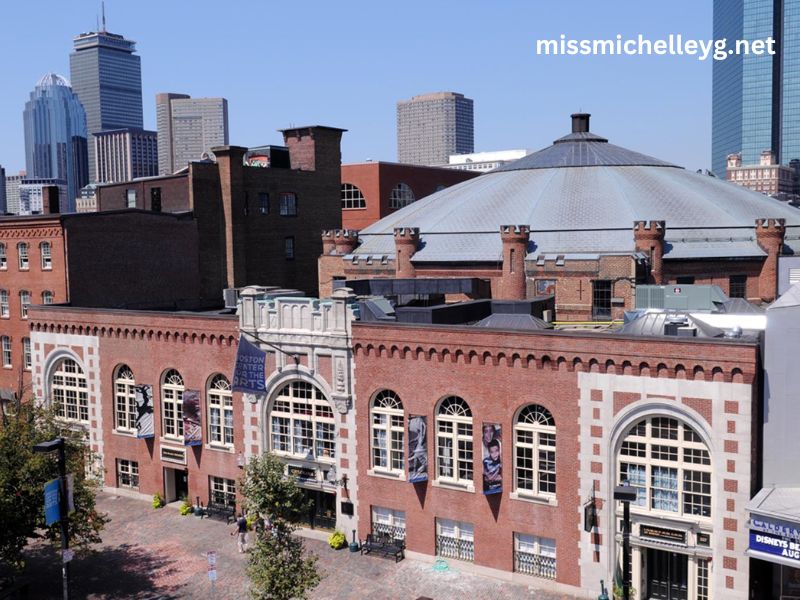The Boston Center for the Arts (BCA) is a dynamic cultural institution located in the heart of Boston’s historic South End. Known for its rich history and commitment to supporting local artists, the BCA serves as a central hub for art, performance, and community engagement. Whether you’re an artist looking for a space to create, a patron seeking innovative performances, or someone eager to explore Boston’s vibrant cultural scene, the BCA offers a wealth of opportunities.
An Overview of the Boston Center for the Arts
Established in 1970, the Boston Center for the Arts has evolved into a vital part of Boston’s artistic landscape. With a mission to support working artists and foster creative expression, the BCA provides a platform for diverse forms of artistic practice, including theater, visual arts, dance, and new media. The center’s facilities are housed within a series of historical buildings, most notably the iconic Cyclorama and Calderwood Pavilion, offering both traditional and cutting-edge spaces for creative work.
BCA’s Facilities and Venues
The Cyclorama is one of the BCA’s most renowned venues. Originally designed for the display of the Gettysburg Cyclorama, this spacious and awe-inspiring space now hosts a variety of performances, exhibitions, and events. As one of the largest venues in Boston dedicated to contemporary arts, it continues to serve as a gathering point for cultural enthusiasts from around the region
Another key space within the BCA is the Calderwood Pavilion, a venue renowned for its intimate theater setting. This venue is home to multiple resident theater companies, including the celebrated Boston Theatre Marathon, a significant event that gathers a variety of local playwrights and artists every May. With several small to mid-sized theaters, the BCA offers the flexibility to host performances of all scales
Supporting Artists and Communities
The BCA’s impact extends far beyond its venues. It serves as an incubator for new works, providing invaluable support to emerging artists. Through various programs, including artist residencies, the center helps artists develop their craft, collaborate with others, and present their work to new audiences. Whether a visual artist or a performing artist, BCA’s commitment to the creative process is a driving force behind its mission
Additionally, the BCA plays a critical role in making the arts more accessible. Its mission emphasizes equitable access to resources and opportunities for both artists and the public. This inclusive approach ensures that a wide range of artists, from established professionals to emerging talents, have access to the tools and spaces they need to thrive
A Destination for Art Lovers
For visitors, the BCA offers an immersive cultural experience. It regularly hosts exhibitions, performances, and arts festivals that draw both local and international talent. The Mills Gallery, for instance, is a space dedicated to contemporary visual arts, offering rotating exhibits that reflect current trends in the art world
The Boston Art Book Fair, an annual event at the BCA, is another highlight, bringing together independent publishers, artists, and creatives to celebrate the world of art books
The Boston Center for the Arts is not only a place to view art but also a place to engage with it. With frequent events such as open rehearsals, workshops, and panel discussions, visitors can gain insight into the artistic process and deepen their appreciation for the work being created.
BCA’s Community Engagement
In addition to its role as an arts hub, the BCA is deeply committed to its surrounding community. The center collaborates with local organizations to provide cultural programs that enrich the lives of Boston residents. This community-focused approach makes the BCA an integral part of the city’s cultural ecosystem. By supporting local artists and engaging the public through workshops, performances, and collaborative projects, the BCA fosters a sense of belonging and shared creative purpose.
Racial Equity and Inclusion
The BCA also recognizes the importance of racial equity in the arts. By acknowledging its responsibility within the historical context of the land it occupies, the center strives to ensure that all individuals, regardless of background, feel welcomed and represented in the arts community. This commitment to inclusion and decolonization is integral to the BCA’s ongoing efforts to create a more just and equitable space for all artists and audiences
Conclusion
The Boston Center for the Arts is more than just a venue—it is a vital cultural institution that nurtures creativity, supports artists, and connects the community through the power of the arts. Whether you are an artist looking to create, a theatergoer seeking world-class performances, or a visitor exploring Boston’s vibrant cultural landscape, the BCA offers a unique and enriching experience. As it continues to evolve and serve the community, the Boston Center for the Arts remains a cornerstone of the city’s creative spirit.






